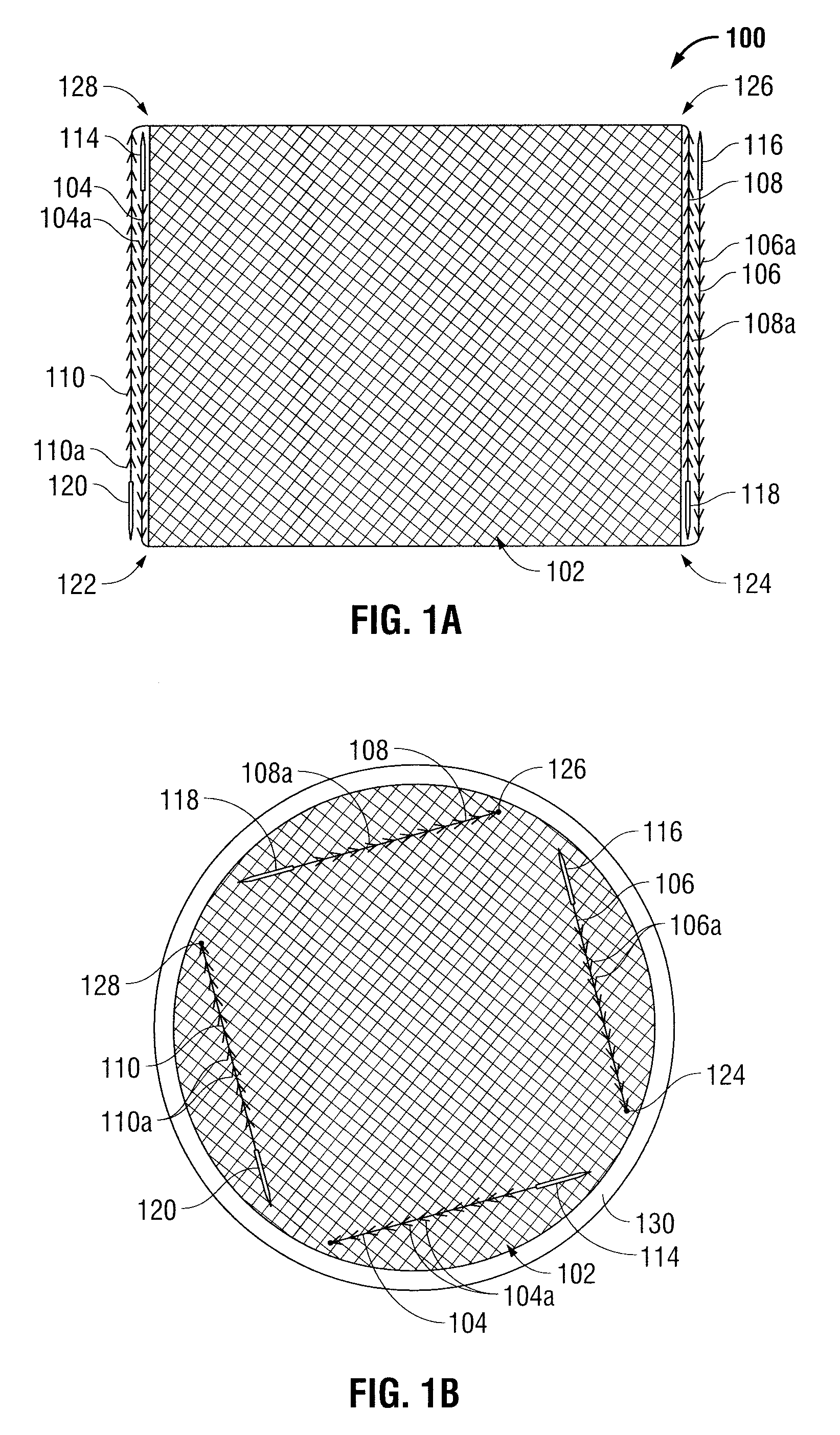Ventral hernia repair with barbed suture
a mesh and ventral hernia technology, applied in the field of mesh application, can solve the problems of high recurrence rate of ventral hernia in this area, difficult and complicated open surgical repairs of ventral hernias, and significant postoperative pain
- Summary
- Abstract
- Description
- Claims
- Application Information
AI Technical Summary
Benefits of technology
Problems solved by technology
Method used
Image
Examples
Embodiment Construction
[0029]The present disclosure relates to devices, systems, and methods for minimally invasive surgeries such as, endoscopic, laparoscopic, arthroscopic, endoluminal and / or transluminal placement of a surgical mesh at a surgical site. As used herein the term “surgical mesh” is used to refer to any type of patch for use in surgical procedures, such as, for example, meshes that require suturing to the abdominal wall. Although described herein with reference to a ventral hernia mesh, the method of the disclosure may be used in any surgical repair. As used herein the term “laparoscopic deployment device” is used to refer to a deployment device that may be used during minimally invasive surgeries described above.
[0030]In the drawings and in the description that follows, the term “proximal,” as is traditional, will refer to an end of a device that is closer to the user, while the term “distal” will refer to the end of the device that is further from the user.
[0031]Laparoscopic surgical proc...
PUM
 Login to View More
Login to View More Abstract
Description
Claims
Application Information
 Login to View More
Login to View More - R&D
- Intellectual Property
- Life Sciences
- Materials
- Tech Scout
- Unparalleled Data Quality
- Higher Quality Content
- 60% Fewer Hallucinations
Browse by: Latest US Patents, China's latest patents, Technical Efficacy Thesaurus, Application Domain, Technology Topic, Popular Technical Reports.
© 2025 PatSnap. All rights reserved.Legal|Privacy policy|Modern Slavery Act Transparency Statement|Sitemap|About US| Contact US: help@patsnap.com



